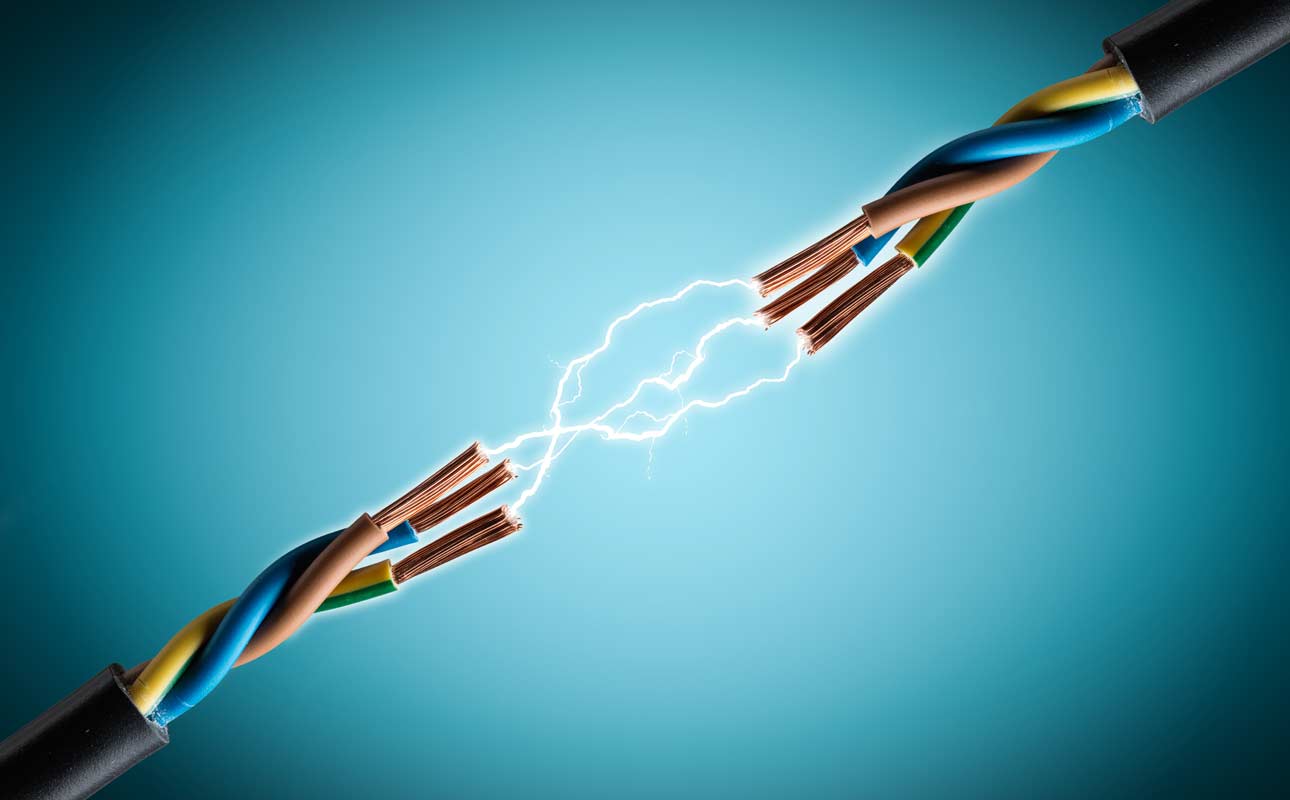Copper thefts are impacting critical infrastructure for business
Key Points
- FBI deems copper thefts as a threat to critical U.S. infrastructure.
- Copper is key component to electronics because of its high conductivity.
- Copper demand is predicted to outpace supply in the near future.
- Learn how to protect your business from copper thieves.

Since the early 2000s, copper thefts have become a growing problem. Deemed by the FBI as a threat to critical U.S. infrastructure, thieves stealing copper wires are causing power and phone outages, exposing live wires and even disrupting emergency services. At the same time, telecommunications companies are facing the copper sunset and copper sunset expenses. This means that plain old telephone service (POTS)–which uses copper wires–is becoming obsolete and increasingly expensive. Let’s look at how these two issues converge and some solutions.
Why is copper king?
Copper is a key material used in power generation, transmission and distribution. Copper has a very high electrical conductivity, and is more conductive than any other material other than silver, according to the National Renewable Energy Laboratory. Aluminum is a competitor, but even it contains about half the conductive power of copper. The result is that copper is used in electrical distribution in almost every system. It’s a key component in things like electronics, batteries, wiring, power lines and–you guessed it, copper phone lines.
The supply and demand of copper
The global demand for copper is high and expected to escalate dramatically because of all the electronic components being created for the energy transition away from fossil fuels to combat climate change. S&P Global Market Intelligence predicts that demand for copper will double by 2035, and copper supply shortfalls will begin in 2025. As the old adage goes, “What isn’t grown, has to be mined.”
Now that metal prices are soaring, thieves are taking advantage and doing some mining of their own. Thefts of copper phone lines and wires have increased exponentially because thieves realize their hauls can be exchanged for cash. They steal it, then sell it to recyclers, who sell it to commercial scrap dealers. These dealers turn around and flow the copper wires into industries that need raw materials and re-use them in the United States or international markets.
This all means there are now organized theft rings that net tens of thousands of dollars of profits per month in the theft and exchange of copper.
With copper shortages and theft, many are left wondering, are copper phone lines still working? The answer is yes, but at a price. As with the rising cost of copper, so is the cost of maintaining copper telephone lines going up. In August 2019, the FCC issued a Memorandum Opinion and Order that relieved certain phone companies of the requirement to offer legacy services for resale at regulated rates. With carriers freed from price caps, the cost of copper phone lines began and continues to rise with no end in sight.
Who is at risk for copper theft and rising metal prices?
The demand for copper and the organized theft rings put many businesses, infrastructures and people at risk. The FBI reports that electrical substations, cell towers, telephone landlines, railroads, construction sites and vacant homes are all targets. And imagine what this disrupts. Electricity, telecommunications, transportation, water supply, heating, security and emergency systems are all vulnerable. From large corporations to residential properties, businesses and people all over are being affected.
Lumen, a global communications service provider, has already shelled out $500,000 due to copper thefts in 2024 in Washington State alone. Copper thefts have affected critical communication efforts at hospitals, airports and ports. Imagine being a patient and not getting results or treatment due to stolen wires. Or how about in Jackson, Mississippi, when five tornado warning sirens didn’t alert residents of impending storms because their copper wires had been stolen?
Copper thievery is lucrative, yet extremely dangerous. The thieves not only risk electrocuting themselves, but also innocent bystanders and animals encountering the live wires exposed in the process. And the problem will only grow as copper prices remain high and companies continue to use copper.
Not to mention the cost of copper phone lines keeps growing for businesses that are still reliant on copper wires. POTS replacement for historic buildings is just one area where POTS replacement lines are needed. To prevent the rising costs of copper wire phone service, healthcare offices, corporations, call centers, restaurants, small businesses, emergency services and more require a solution.
Protect your business
Although copper wire theft seems inevitable, some states are stepping in with strict laws on the sale and purchase of copper. Even if your state hasn’t enacted any legislation yet, some solutions exist. Sources like the FBI suggest making it hard for thieves to get to copper wires. Companies can do things such as:
- Install security lights and security cameras
- Use fences that are resistant to wire-cutting
- Watch for and report suspicious behavior
- Spray-paint wires for identification if stolen
Replace your copper wires with VoIP
While the race is on to find replacement metal wires that are as conductive as copper wires, the telecommunications world has a solution: Voice over Internet Protocol (VoIP)–a newer technology that replaces the need for landline copper phone wires with a digital connection.
For many businesses, this seems like a way to kill two birds with one stone. Eliminate the rising cost of copper phone lines and reduce the vulnerability of copper wire theft. VoIP phone systems require a good internet connection and can be used in place of copper telephone lines with either an analog or digital phone.
What is VoIP?
VoIP is an internet-based phone system. For businesses looking to make the switch, VoIP will work with your high-speed internet and existing analog or digital phones. Businesses that switch to VoIP phone service get the luxury of call transfer, call hold, extension dialing, call routing and everything that comes with a landline phone, plus connectivity through your mobile device.
And VoIP isn’t just for businesses. Households can make the switch, too.
VoIP pricing
As metal prices and cost of copper phone lines continue to increase, VoIP offers more affordable solution. VoIP systems can easily add advanced business phone features like virtual fax, ring groups, call recording and virtual receptionists.
Ooma has pulled some numbers together to make this easy to understand. For a traditional business landline annually per user, you’re looking at between $800 and $1,000. For a VoIP phone line, the cost is around $300 to $480 per user per year. And Ooma takes it a step further with Ooma Office business plans starting at $239 per year. That’s $19.95 per user per month for unlimited local and long-distance calling in the U.S., Canada, Mexico and Puerto Rico and more than 100 features, including a mobile app.
How Ooma can help
Ready to switch to VoIP? If so, Ooma should be on your radar. Ooma is a leading VoIP provider with low monthly rates. Ooma small business customers enjoy reduced phone costs and increased communication capabilities. No technical skills are required for setup; just follow a few simple steps, then enjoy a low set monthly rate with no hidden fees, no contracts, unlimited calling in the U.S., Canada and Mexico, the ability to scale your phone system as you grow, and 24/7 customer support.
Ooma Office includes the Ooma Office mobile app to stay connected even when you’re away from the office through your smartphone. Switching is easy; you can even keep your current phone number or select a new one.
Call Ooma today at (877) 353-5185 to get started!

Learn more about how Ooma Office can help your business.
Thank you!
An Ooma Office Sales Representative will be in touch shortly.
866-573-0707


Learn more about how Ooma Office can help your business.
Just call 877-621-0515 or click this to CHAT. Or, fill out this form and someone will reach out to you shortly.



